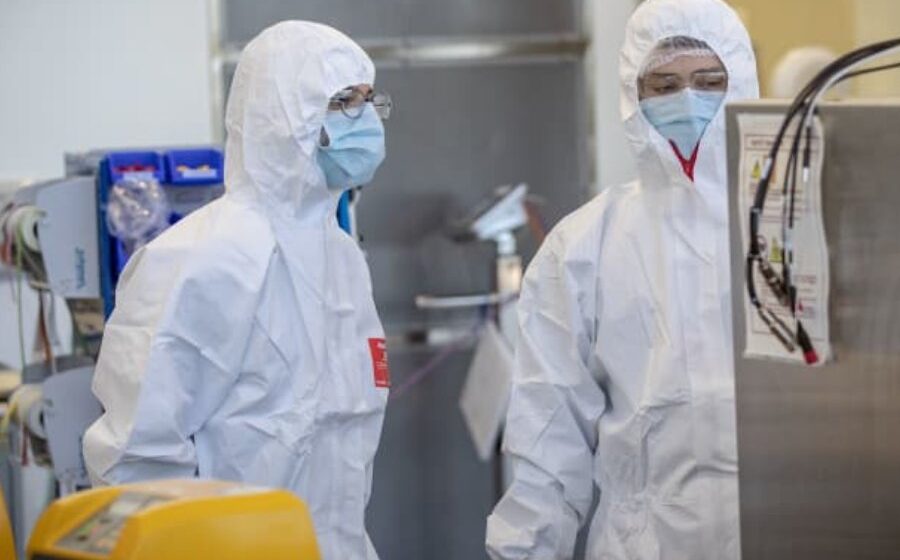A new coronavirus variant Deltacron has emerged in Cyprus which has a similar genetic background to the Delta variant, as well as some of the mutations from Omicron, and experts say that it is not something to be worried about at the moment, a media report said.
In total, 10 of the mutations from Omicron were found in the 25 samples taken in Cyprus. 11 of the samples came from people who were hospitalized due to the virus, while 14 came from the general population, reported Jerusalem Post citing Cyprus Mail.
Dr. Leondios Kostrikis, the head of the laboratory of biotechnology and molecular virology at the University of Cyprus, said that the frequency of the mutation among hospitalized patients was higher and could point to a correlation between the new variant and hospitalizations.
Kostrikis also emphasized that the variant has a similar genetic background to the Delta variant, as well as some of the mutations from Omicron.
China saw its first omicron cases in the community, igniting a mass testing blitz in the northern city of Tianjin as the country strives to maintain its zero-tolerance approach to Covid in the face of more transmissible variants.
The two cases in the port city were confirmed as being omicron by the Chinese Center for Disease Control and Prevention, after its local branch completed the genome sequencing, CCTV reported. The infections were from the same transmission chain but officials have yet to establish if the strain is the same as imported omicron cases reported earlier in Tianjin, according to the report.
Tianjin first reported the two cases late Saturday and neither of the people, one of whom is a child, have traveled outside of the city in the past 14 days. The government announced that it will start mass testing from 7 a.m. Sunday, in order to “effectively prevent the further spread of the omicron variant,” state news agency Xinhua reported.
Meanwhile, the U.S. is planning to hand out $10 billion to help upstart companies gain access to capital in a bid to rev up business in disadvantaged communities and spur a broader economic recovery from the pandemic.
The State Small Business Credit Initiative will direct money to states, territories and tribal governments for programs that provide venture capital or encourage private lenders to issue loans to small firms. The program revives a policy put into place following the 2007-2009 recession, when banks cut back on lending to small firms.The $10 billion is more than six times as large the cost of the earlier program, in part because the administration and Congress wanted to dedicate funds to disadvantaged groups, said Adair Morse, the Treasury Department’s deputy assistant secretary of capital access. The groups include racial minorities, rural communities and veterans, according to program guidelines.The rollout comes as other parts of President Biden’s small-business agenda are stalled amid broader uncertainty over the fate of his spending plan for healthcare, education and climate-change programs.
On the other hand, an eye-popping 90,132 New Yorkers tested positive for Covid-19 on Friday, blowing past the prior day’s record of 82,094, state data showed.
More than half, or 47,591, of the positive cases were detected in New York City, where the Omicron surge has hit hard.
Positive results came back for 21.17 percent of the 425,782 people tested statewide, a slight decrease from the 22.15 positivity rate reported over the last seven days.
In the five boroughs, the seven-day positivity rate was 21.75 percent, edging down from 22.16 percent on Thursday. The Bronx had the city’s highest positivity rate, at 25.94 percent, followed by Queens at 24.15 percent.
UK also continues to reel under a new wave of the pandemic as staff shortages caused by Covid-19 illness and mandatory isolation could result in a 35-billion pound ($48 billion) loss in output over January and February, according to The Sunday Times.
The projected loss is equivalent to 8.8% of gross domestic product and based on government planning assumptions of a 25% absenteeism rate, the study conducted by the Centre for Economics and Business Research showed.
Even a more conservative estimate of 8% absenteeism—which is three times the seasonal average—could result in loss in output of 10.2 billion pounds, or 2.6% of GDP.



